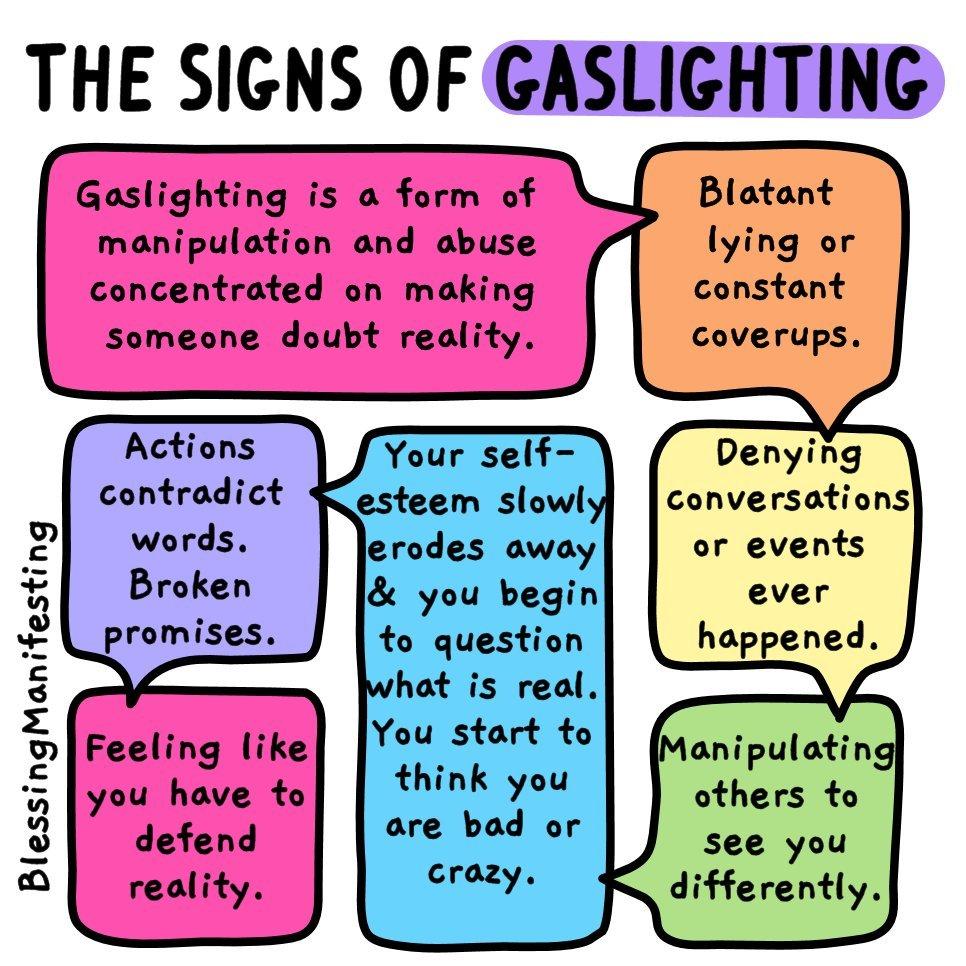In the delicate dance of human relationships, the early stages often shimmer with the allure of newness and possibility. Yet, beneath the surface of charm and affection, subtle undercurrents can sometimes flow—undercurrents that, if left unchecked, can erode the foundation of trust and mutual respect. One such insidious force is gaslighting, a form of psychological manipulation that can leave even the most astute individuals questioning their own perceptions and sanity. As we navigate the intricate tapestry of emotions and interactions in the blossoming phase of a relationship, learning to recognize the faint whispers of gaslighting can empower us to safeguard our emotional well-being. This article explores the subtle signs of gaslighting, offering insights and guidance on how to spot this manipulative behavior before it takes root, ensuring that the relationships we nurture are grounded in authenticity and respect.
Recognizing the Subtle Signs of Manipulation
In the early stages of a relationship, it’s crucial to be aware of behaviors that might seem insignificant but could be early signs of manipulation. Gaslighting, a subtle yet powerful form of psychological manipulation, can often go unnoticed until its effects are deeply rooted. Here are some key indicators to watch for:
- Inconsistent Narratives: Does your partner frequently contradict themselves or tell different versions of the same story? This tactic can leave you questioning your memory and perception.
- Minimizing Your Feelings: When you express concerns, are they dismissed as trivial or overly emotional? A gaslighter often undermines your emotions to make you feel irrational.
- Shifting Blame: If conflicts arise, does your partner consistently shift the blame onto you, making you feel at fault for issues you didn’t cause?
- Isolation Tactics: Be cautious if your partner subtly discourages you from seeing friends or family, as this can be a method to gain more control over your environment.
Recognizing these patterns early can empower you to address them directly, fostering a healthier and more transparent relationship.

Understanding the Psychological Tactics of Gaslighting
Gaslighting is a subtle yet powerful form of manipulation that can leave victims questioning their reality. One of the primary psychological tactics employed in gaslighting is the deliberate distortion of facts, which can make the victim doubt their own perceptions and memories. This often begins with small, seemingly innocent comments or contradictions, gradually escalating to more significant fabrications. The goal is to destabilize the victim’s confidence in their understanding of events, creating a dependency on the manipulator for the ‘correct’ version of reality.
Another tactic is the use of emotional invalidation. Gaslighters often dismiss or trivialize the victim’s feelings, suggesting that they are overreacting or being too sensitive. This can lead to a cycle where the victim starts to internalize these criticisms, further eroding their self-esteem and autonomy. Be on the lookout for patterns such as:
- Constant contradiction: Frequent disagreements with your version of events, even when evidence supports you.
- Projection: Accusing you of behaviors or thoughts they are exhibiting themselves.
- Withholding information: Refusing to engage in conversations about the manipulation, claiming forgetfulness or miscommunication.
Recognizing these tactics early can help in setting boundaries and seeking support before the gaslighting takes a deeper psychological toll.

Building Emotional Resilience and Self-Trust
Developing emotional resilience and self-trust is essential when navigating the complexities of relationships, particularly when recognizing the subtle signs of gaslighting. Gaslighting, a form of psychological manipulation, can erode self-confidence and make one doubt their perceptions. Strengthening your emotional resilience involves cultivating a strong sense of self-awareness and self-compassion. This can be achieved by regularly checking in with your emotions and recognizing when something feels off. Practicing mindfulness can help you stay grounded and more attuned to your feelings, allowing you to trust your instincts.
- Trust Your Feelings: Validate your emotions, even when others dismiss them. Your feelings are your internal compass.
- Set Boundaries: Clearly communicate your limits and be firm in upholding them. Boundaries are crucial for maintaining self-respect.
- Seek Support: Reach out to friends or professionals who can provide perspective and reinforce your sense of reality.
By reinforcing these aspects, you can build a shield against the corrosive effects of gaslighting, ensuring that your self-trust remains intact.

Effective Communication Strategies to Counter Gaslighting
When faced with the subtle manipulations of gaslighting, deploying effective communication strategies is crucial. Begin by maintaining a calm and composed demeanor. This not only helps you stay grounded but also prevents the situation from escalating. Assertiveness is key. Clearly articulate your thoughts and feelings without aggression, using “I” statements to express how certain behaviors affect you. This helps in setting boundaries and reinforces your perception of reality.
Engage in active listening to ensure that you fully understand the other person’s perspective, even if it’s distorted. This can sometimes reveal inconsistencies in their narrative, which can be tactfully pointed out. Consider these strategies to bolster your communication:
- Document conversations: Keep a record of important discussions to reference later if needed.
- Seek external validation: Discuss your experiences with trusted friends or a therapist to gain perspective.
- Use neutral language: Avoid emotionally charged words that could provoke defensiveness.
By mastering these techniques, you empower yourself to navigate and potentially neutralize the effects of gaslighting, fostering healthier interactions.








